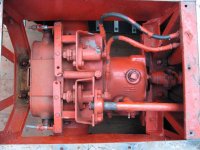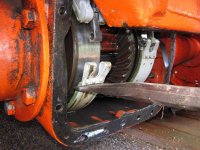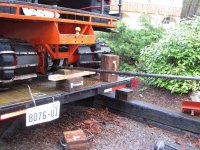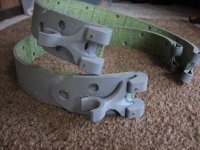Welcome to the Forum! I bought an Imp about three years ago and have found the Forum to be a valuable source of knowledge, encouragement, and foolishness.
From your description is isn't clear to me if you've got a hydraulic problem (master cylinder or slave cylinder) or a mechanical one (weak brake band). If you're not leaking brake fluid from either cylinder then I'd be inclined to think your hydraulics are OK. Plus, you've already replaced half the system, so there's less left to fail.
For the brake bands, you can try cinching up the adjustment nuts on the rear end. Look for a couple levers on each side of the rear end that stick up above the top. Tighten up the nuts on the right side and see if that makes a different.

If that doesn't work then you'll need to take a peek inside of the rear end to see how the brake bands look. This isn't rocket science, but it does take a little more effort and preparation. Buy a pail of transmission fluid, pop the back cover off, and see how things look.

Allocate a day for the work the first time you do this, but subsequent trips into the rear end will only take a couple hours (you'll get speedier with experience). There are linkages inside that will allow you to further tighten up the brake bands. Photos below show how I use a 6' steel rod to lever the brake bands tight enough so that I can slip the pin back into place.


If you decide that the brake bands are kaput then you can get them rebuilt at
Spryte Improvement -- Pat will take good care of you.

The steering system on an Imp really is pretty simple. If you've ever rebuilt brakes on a car then you have all the knowledge and experience you need to do the job. Dive in, and if you get stuck on something, don't be shy about asking for help.
Ron





